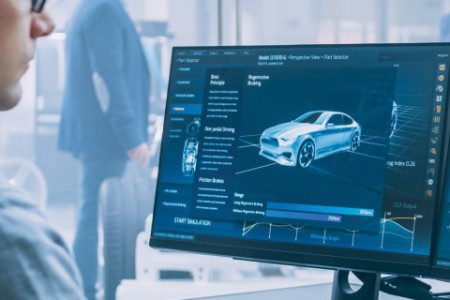Driving innovation in the Indian connected car industry
The changing preferences of the Indian consumer reflect a desire for intelligence not just in transportation but across various aspects of life, from manufacturing and home to the workplace. With India poised to outpace China in Mobile Broadband (MBB) subscriptions and data traffic, driven by the anticipated 57% adoption of 5G in mobile subscriptions by 2028, digital opportunities are steering the next wave of growth in the country.
The continuous demand for seamless in-car technology from end consumers is propelling innovation and collaboration across sectors, including telecom, internet service providers, automakers, and component manufacturers. Original Equipment Manufacturers (OEMs) are expanding internal teams to address challenges related to integrating vehicle platforms into the entertainment, communication, and IT space. Alignment and collaboration across stakeholders in this connected ecosystem are crucial to ensure that consumers experience innovation while trusting in the safety, seamlessness, relevance, and durability of these solutions.
The pressure from the connected consumer emphasizes the need for the right strategy, with connected car programs becoming increasingly vital for differentiating brands and vehicles. This contributes not only to consumer engagement, satisfaction, and loyalty but also shapes the landscape for the next purchase.
The complexity of the connected car ecosystem, with its multitude of services and stakeholders, necessitates an understanding of connected car end-services, delivery methods, stakeholders, new revenue streams, and key questions about technical feasibility and commercial viability. Success in connected vehicles demands a focused strategy and diligent execution, with internet-enabled mobility and telematics playing pivotal roles.
Exploring use case scenarios becomes imperative to uncover how connected technology can reduce range anxiety, enhance shared mobility through connected dashcams, improve telematics in claims for real customer protection, and establish the core offering of telematics insurance and connected dashcams.
Improving security measures in connected cars
The latest terminology in the connected car phenomenon is the Advanced Driver Assistance System (ADAS) technology, designed to improve the safety and convenience of driving by providing real-time information and alerts to help avoid collisions and potential hazards.
However, amid the transformative opportunities, the architecture of connected cars introduces associated risks involving various data points. From basic features like odometer readings to critical information on collision event location and severity, connected cars collect and share a wide variety of data attributes with apps and services. Connected cars are vulnerable to a range of cybersecurity threats, including hacking, data breaches, and malicious attacks. As vehicles become more sophisticated with internet connectivity, sensors, and onboard computers, the attack surface for potential exploits expands. Cyber threats can compromise the safety, privacy, and functionality of connected cars, making it imperative to implement robust security measures.
The assessment of security testing in connected cars becomes a critical criterion. Some of the key security challenges are:
- Addressing concerns related to the collection, storage, and sharing of sensitive data generated by connected cars.
- Examining the risks associated with wireless communication protocols, including potential interception, and tampering of data.
- Recognizing the importance of secure software development practices to prevent vulnerabilities in the vehicle's onboard systems.
- Strengthening access controls to prevent unauthorized access to critical vehicle systems.
Safeguarding automotive innovation in the future
A snapshot of the cybersecurity market for cars reveals a market valued at US$186.63 million in 2019, expected to reach US$2460.9 million by 2025, registering a notable market CAGR of 52.15%. To secure the connected car, cybersecurity needs to be embedded across the entire ecosystem, driven by the increasing connectivity of vehicles, adoption of telematics services, and integration of advanced features.
So, the car is connected now, but are we safe? Cyber securing the connected car has become a paramount theme. As the automotive industry undergoes unprecedented innovation, it is crucial for all stakeholders—OEMs, regulators, component suppliers, insurance companies, and consumers—to focus on making the connected world safe. The road ahead is promising, but cybersecurity is the key to ensuring a secure and resilient connected car ecosystem.


